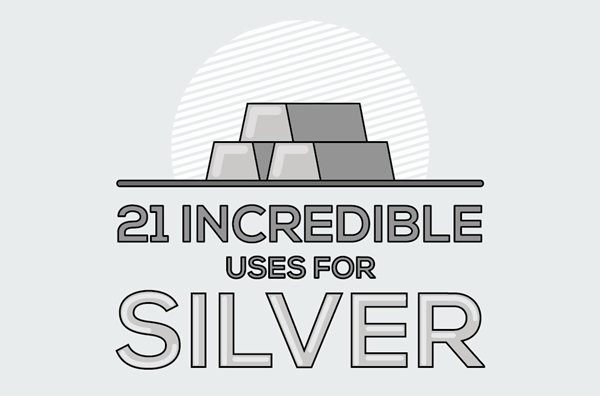What are the main uses of silver?
What is silver?
Silver's main industrial uses
Solar energy
Photographic silver
Medicine
Brazing alloys and solders
What does brazing alloys and solders mean?
Net physical investment
What does net physical investment mean?
Net hedging demand
What does net hedging demand mean?
Jewelry
What is defined as jewelry in silver demand?
Silverware
What is defined as silverware in silver demand?

21 Interesting uses of silver
Treating warts and corns
Cloud seeding
Media storage
Long life batteries
Personal deodorant
Keeping milk safe
Engines
Stained glass
3D Printing
Antimicrobial lab coats
Touch screen gloves
Water purification
Help to stop smoking
Laundry detergent
Plastics
Wood preservation
Automotive industry
Novelty explosives
Food garnishing
FAQs: Silver uses
Silver’s symbol Ag derives from the Latin name argentum, meaning “silver,” itself from Greek ἄργυρος (argyros) and the Proto-Indo-European root meaning “white, shining”.
The Old English term for silver was recorded as seolfor, also spelled siolfor, derived from Proto-Germanic *silubra and cognate with Old High German silabar and Gothic silubr. This name persisted until Middle English before evolving into modern “silver”.
Gold is preferred over silver in electronics because its corrosion resistance ensures stable, tarnish-free conductivity for connectors and contacts, whereas silver can tarnish due to a chemical reaction with sulfur, not oxygen, forming non-conductive layer that can impair performance, making gold indispensable for high-reliability applications.
Ancient mints produced coins in silver or silver alloys: Lydian electrum issues (~600 BC) preceded Greek drachma and Roman denarius, establishing silver as a monetary standard, and many medieval and modern coinages continued the tradition.
